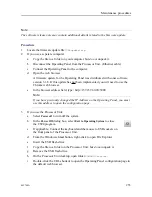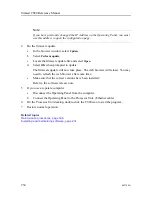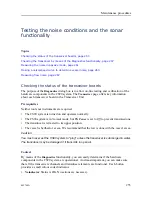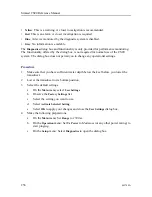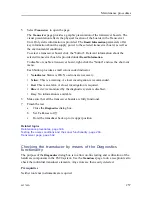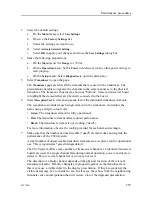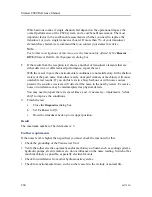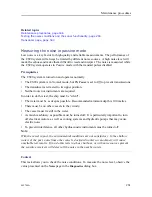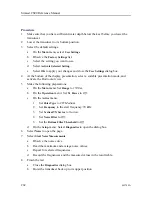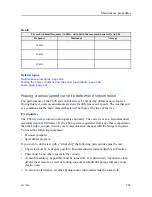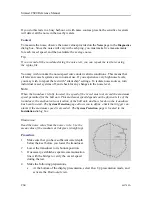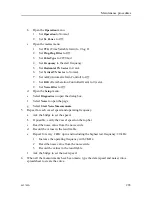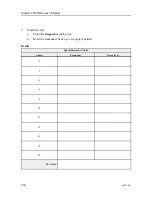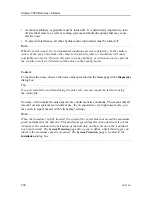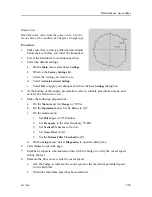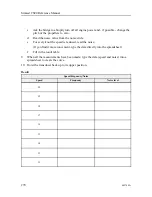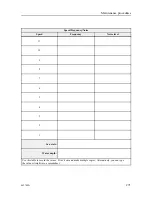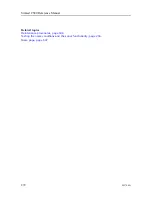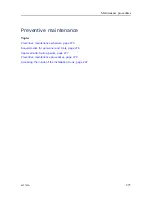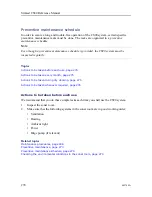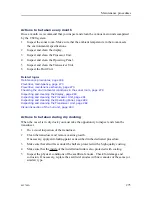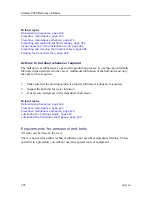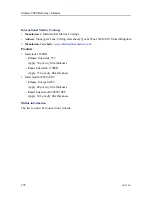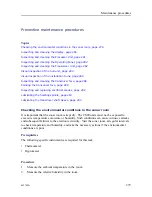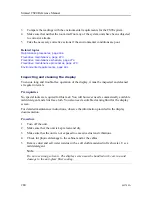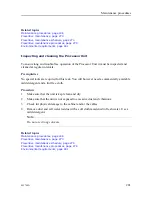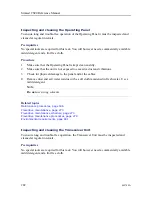
442700/A
267
Speed/Frequency/Noise
Speed
Frequency
Noise level
Water depth:
Use this table to record the values. Print it out and make multiple copies. Alternatively, you can type
the values straight into a spreadsheet.
Related topics
Maintenance procedures, page 186
Testing the noise conditions and the sonar functionality, page 255
Noise page, page 547
Measuring flow noise
The upper water layers of the sea contain a myriad of small air bubbles created by the
breaking waves. When the hull moves through water it will cause a disturbance, and this
will generate friction. The friction zone is called the
flow boundary layer
. All objects
sticking out from the hull, or dents in the hull, will disturb the flow and will increase the
thickness of the boundary layer. When the flow speed is high, the turbulence can be violent
enough to destroy the integrity of the water. Small voids or cavities in the water will occur
and this is called cavitation.
Prerequisites
The CS90 system is turned on and operates normally.
• The CS90 system is in
Normal
mode, but
TX Power
is set to
Off
to prevent transmissions.
• The transducer is retracted to its upper position.
• If the CS90 system is operated from any other compartment than the bridge, an open
two-way oral communication channel with the bridge is required.
• Neither tools nor instruments are required. You may however find this equipment useful:
– Personal computer
– Spreadsheet program
In order to do this test, the ship must be "silent".
• The water must be as deep as possible. Recommended minimum depth is 100 metres.
• There must be no other vessels in the vicinity.
• The vessel must lie still in the water.
Summary of Contents for Simrad CS90
Page 1: ...kongsberg com simrad Simrad CS90 REFERENCE MANUAL ...
Page 2: ......
Page 627: ...442700 A 625 Related topics Concept descriptions page 622 Concept descriptions ...
Page 683: ......
Page 684: ... 2021 Kongsberg Maritime ISBN 978 82 8066 213 2 ...
Page 685: ......
Page 686: ...Reference Manual Simrad CS90 ...

